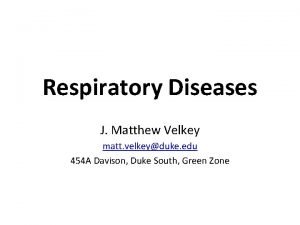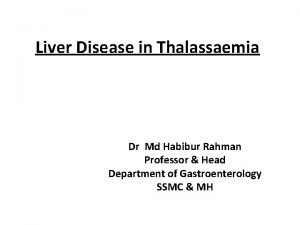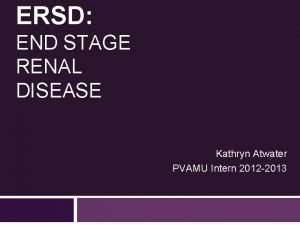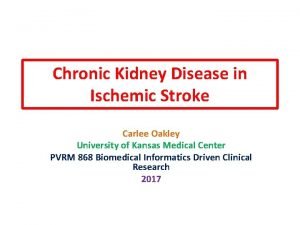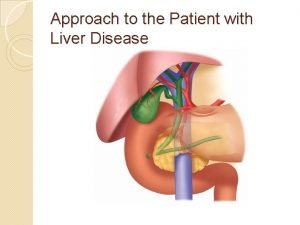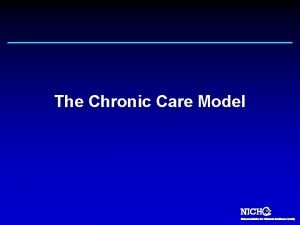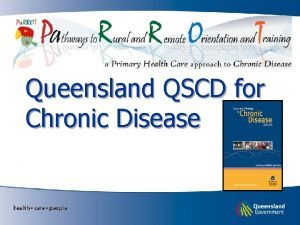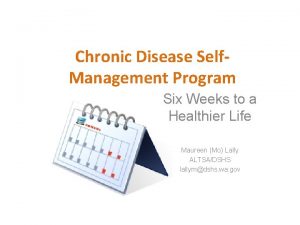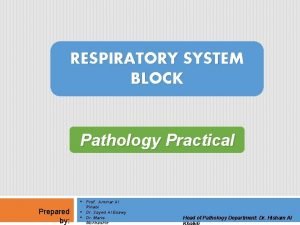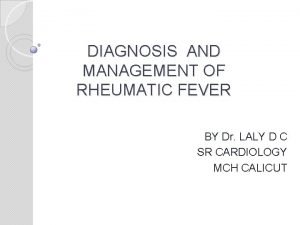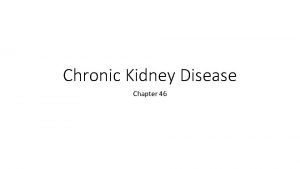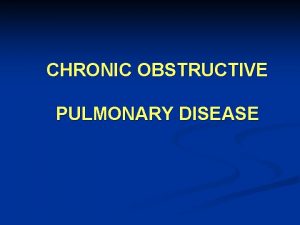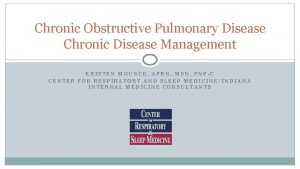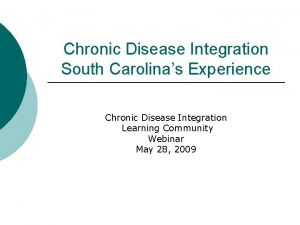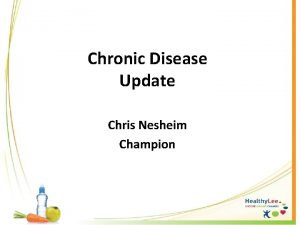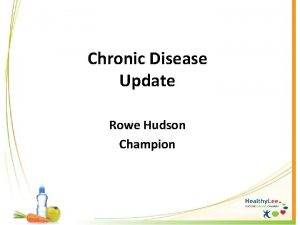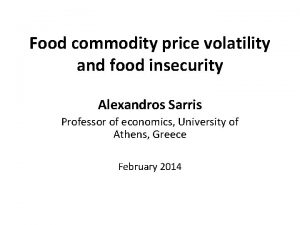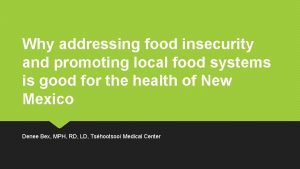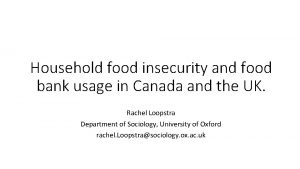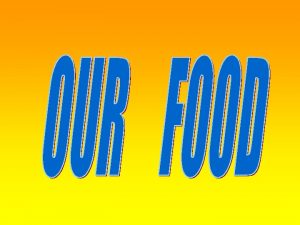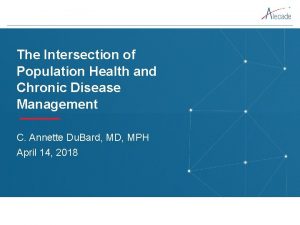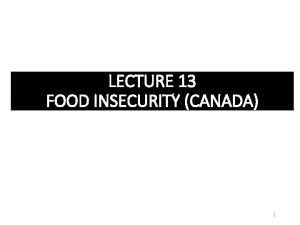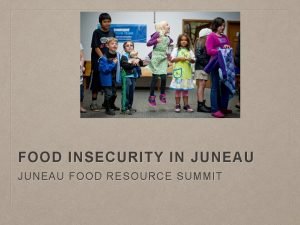Food Insecurity Chronic Disease and Population Health Our























- Slides: 23

Food Insecurity, Chronic Disease and Population Health

Our History & Mission The Greater Cleveland Food Bank was founded in 1979. We work to ensure that everyone in our communities has the nutritious food they need every day.

How We Work in the Community DONATED FOOD AND MONEY GREATER CLEVELAND FOOD BANK Food is donated by retailers, manufacturers, and food drives, or acquired through state and federal nutrition programs. Money and food are also donated by businesses and individuals. Once donations arrive at the Food Bank, volunteers sort, repackage, or prepare the food to be distributed to the community. PARTNER PROGRAMS FOOD INSECURE NORTHEAST OHIOANS Local churches, community centers, schools, and other Agencies distribute food and/or serve prepared organizations partner with the Food Bank and order meals to hungry people in their communities. bulk food from our warehouse to have delivered to Nearly half of these clients are children or seniors. their location.

*Data based on Gundersen, C. , A. Dewey, A. Crumbaugh, M. Kato & E. Engelhard. Map the Meal Gap 2018: A Report on County and Congressional District Food Insecurity and County Food Cost in the United States in 2016. Feeding America, 2018.

Our Network of 900+ Member Agencies and Programs Mobile Pantries 230 School Markets 29 Hot Meals & Shelters 132 Kids Café 101 Senior Markets 21 Back. Pack Programs 53 145 Food as Medicine Sites 10 Summer Feeding Programs 107

The USDA defines food insecurity as limited or uncertain access to enough food for all members of a household to live an active, healthy life • Includes quality and quantity • 40 Million Americans, 5 M Seniors • More than 308, 000 in our service area, including 83, 460 children • Food insecurity in our service area is 14% higher than the national average • Cuyahoga County is 23% higher, at almost 1/5 individuals • Highest FI demographic is single moms with children (1/3)

Food insecurity is not synonymous with poverty Food Insecurit. Poverty y • 58% of food insecure individuals are above the federal poverty level • 61% of individuals living in poverty are food insecure Ohioans are eligible for emergency food assistance if their income is less than 200 percent of federal poverty guidelines, and eligible for SNAP if at or below 130 percent of federal poverty guidelines

Food Insecurity results in and from difficult choices Research from Feeding America has shown that food insecure individuals struggle with competing expenses 64% Have had to choose between paying for utilities and food 65% Have had to choose between paying for transportation and food 62% Have had to choose between paying for medicine and food 54% Have had to choose between paying for housing and food 78% of clients report purchasing unhealthy food to stretch their budgets Sources: Map the Meal Gap (2014) and Hunger in America (2014)

Among Food Insecure Households, Hypertension and Diabetes are most common 61% of Households have a member with High Blood Pressure 30% of Households have a member with Diabetes 42. 8% of clients responded they are in fair or poor health 30% of households all members have no health insurance* 52% of households report some medical debt Source: Feeding America. Hunger in America 2014 – Executive Summary. Accessed at: http: //www. feedingamerica. org/hunger-in-america/ourresearch/hunger-in-america/ *The Affordable Care Act went into effect after the fielding period of this survey

Food Insecurity has a strong correlation with Chronic Disease #1 Food insecure individuals are more likely to develop a chronic disease • • Hypertension - 25% + Type II Diabetes – 25% + Kidney disease – 50% + Osteoporosis – 400% + Sources: CVD • High blood pressure 25% more common in patients with food insecurity in a nationally representative sample • Irving SM, Njai RS, Siegel PZ. Food insecurity and self-reported hypertension among Hispanic, black, and white adults in 12 states, Behavioral Risk Factor Surveillance System, 2009. Preventing chronic disease. 2014; 11: E 161. Kidney disease • Food insecurity is associated with ~50% increase in kidney disease, especially in patients with diabetes and/or high blood pressure, in a national sample • Crews DC, Kuczmarski MF, Grubbs V, et al. Effect of food insecurity on chronic kidney disease in lower-income Americans. American journal of nephrology. 2014; 39(1): 27 -35. Osteoporosis • Food insecurity associated with 4 times the risk for osteoporosis, especially for women, in a national sample • Lyles CR, Schafer AL, Seligman HK. Income, food insecurity, and osteoporosis among older adults in the 2007 -2008 National Health and Nutrition Examination Survey (NHANES). Journal of health care for the poor and underserved. Nov 2014; 25(4): 1530 -1541. Obesity • Adams EJ, Grummer-Strawn L, Chavez G. Food insecurity is associated with increased risk of obesity in California women. J Nutr 2003; 133: 1070– 1074. • http: //jn. nutrition. org/content/133/4/1070. short

Food Insecurity has a strong correlation with Chronic Disease #2 Once a disease is established, food insecurity makes management more difficult • • Increases the number of tough choices ($ on food, medications, transportation, etc) Decreases medication adherence • Diabetes example: • Reduces self-efficacy to manage disease • Worse glycemic control • Higher rate of emergency visits • Cancer patients at 5 x higher risk for food insecurity Recent research estimates that food insecurity results in $77. 5 billion in additional health care costs per year ($1, 863 per individual) Sources: Gany F, Lee T, Ramirez J, et al. Do our patients have enough to eat? : Food insecurity among urban low-income cancer patients. Journal of health care for the poor and underserved. Aug 2014; 25(3): 1153 -1168. Ippolito, JPHN July 2016, Seligman, Diabetes Care 2013

Food Insecurity in Seniors

Senior Food Insecurity • Nationally, 8% of seniors (age 60+) are food insecure, meaning they worried about whether their food would run out or didn’t have enough money to purchase the type food they needed. • Food insecurity is more than twice as high among black (17%) and Hispanic (16%) seniors compared to white seniors (6. 5%). • Food insecurity among seniors grows to nearly 16% when there is a grandchild living in the same household. • Ohio had the same senior food insecurity rate as the nation (8%), while Cleveland’s food insecurity was at 9. 5%. • The rate of hunger among seniors aged 60 and older has increased by 45% since 2001, a lingering effect of the 2008 -09 recession Source: Feeding America, The State of Senior Hunger in America in 2017

Senior Food Insecurity & Health Outcomes Increase in Likelihood of Poor Health Outcomes for Food Insecure Seniors 100% 91% 80% 66% 65% 57% 60% 40% 32% 19% 20% 0% Asthma Heart Attack Diabetic Congestive Heart Failure Activities of Daily Living Limitation High Blood Pressure Source: Feeding America, analysis of National Health and Nutrition Examination Survey Data (1999 -2014), 2017

The obesity rate among seniors with incomes below $25, 000 was 39% higher than for seniors with incomes of $75, 000 or more. Senior Obesity Rate by Income Level 23% $75, 000 or More 27% $50, 000 -$74, 999 30% $25, 000 -$49, 999 32% Less than $25, 000 0% 5% 10% 15% 20% 25% 30% 35%

Seniors with incomes of more than $75, 000 were 135% more likely to report very good/excellent health compared to seniors with incomes below $25, 000. Seniors (65+) Reporting Very Good/Excellent Health Status by Income Level 61% $75, 000 or More 50% $50, 000 -$74, 999 40% $25, 000 -$49, 999 26% Less than $25, 000 0% 10% 20% 30% 40% 50% 60% 70%

Rate of Diet-Related Illness in Households Served by GCFB Agencies 100% • Three in four households with seniors (76%) had at least one member struggling with high blood pressure, compared to half of households without seniors (53%). • When it came to households with seniors, the rate of diabetes was at 39%, compared to 26% for households without seniors. • More than half of households with seniors (55%) reported choosing between paying for food and paying for medicine or medical care. 76% 80% 61% 60% 40% Health of GCFB Seniors 39% 30% 20% 0% Diabetes All Households High Blood Pressure Households with Seniors (60+)

Food as Medicine Models

Screening for Food Insecurity is the Key to Intervention Hunger Vital Sign. TM * 1) Within the past 12 months, we worried whether our food would run out before we got money to buy more often true sometimes true never true don’t know/refused 2) Within the past 12 months, the food we bought just didn’t last and we didn’t have money to get more often true by Children’s sometimes never true don’t * Created and validated Health. Watch true (Boston Medical Center), endorsed by American Academy of know/refused Pediatrics, American Academy of Family Physicians, and others Best Practices • Integrated into regular intake process • Asking in writing is more effective • Asked at every visit • Coding options available for EHRs • If you don’t ask, you don’t know

On-Site Food Resources for Food Insecure Patients Include: 1. Therapeutic Food Clinics: Provide nutritious and health condition-appropriate foods to foodinsecure patients after a clinical referral A. Full-scale clinic: fresh, frozen, refrigerated, and shelf-stable foods B. Shelf-stable-only: canned foods, dried goods, shelf-stable milk Examples: Metro. Health, UH Otis Moss, The Centers 2. Produce Distributions: A truckload of fresh produce is delivered to healthcare centers on a regular basis in areas of high need. Examples: Metrohealth, NEON, J. Glen Smith, Stephanie Tubbs Jones, Medworks

Off-Site Food Resources for Food Insecure Patients Involve Referrals to our Help Center: Nutrition Prescription Pads • Given to patients from provider • Number included is for medical referrals only, which enables us to track medical referrals and associated outcomes Online Referral Form • Providers refer patients directly • Help Center responds to patient within 24 hours or as requested • Online referral form example • Can track referrals and evaluate patient and process outcomes Help Center Referrals Include - Food access - Nutrition/food education - Long-term support

Help Center and Outreach Services:

For More Information Contact Us: FAM@Cleveland. Foodbank. org Current Partnerships
 Chronic granulomatous disease
Chronic granulomatous disease Stigmata of chronic liver disease
Stigmata of chronic liver disease Jewish chronic disease study
Jewish chronic disease study Ersd
Ersd Chronic liver stigmata
Chronic liver stigmata Carlee oakley
Carlee oakley Stigmata of chronic liver disease
Stigmata of chronic liver disease Stigmata of chronic liver disease
Stigmata of chronic liver disease Kate lorig chronic disease self-management
Kate lorig chronic disease self-management Ed wagner chronic care model
Ed wagner chronic care model Chronic disease
Chronic disease Stage 3 liver disease
Stage 3 liver disease Chronic disease
Chronic disease Chronic obstructive pulmonary disease
Chronic obstructive pulmonary disease Chronic rheumatic heart disease
Chronic rheumatic heart disease Communicable disease and non communicable disease
Communicable disease and non communicable disease Flinders model of chronic health disorders
Flinders model of chronic health disorders Population ecology section 1 population dynamics answer key
Population ecology section 1 population dynamics answer key Population ecology section 1 population dynamics answer key
Population ecology section 1 population dynamics answer key Population ecology section 1 population dynamics
Population ecology section 1 population dynamics Population ecology section 1 population dynamics answer key
Population ecology section 1 population dynamics answer key Our awareness of ourselves and our environment
Our awareness of ourselves and our environment Our awareness of ourselves and our environment is called
Our awareness of ourselves and our environment is called Awareness of ourselves and our environment
Awareness of ourselves and our environment
